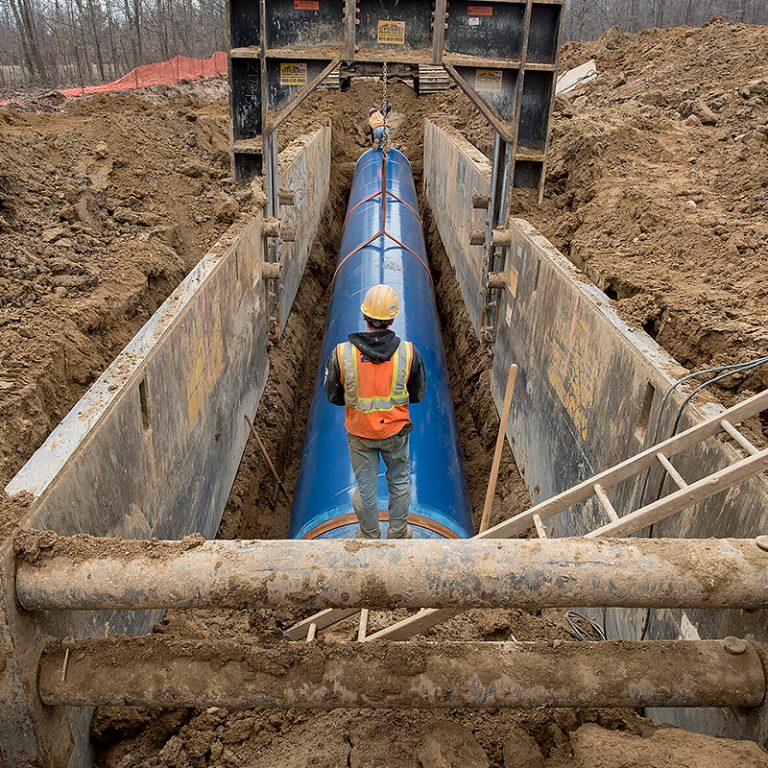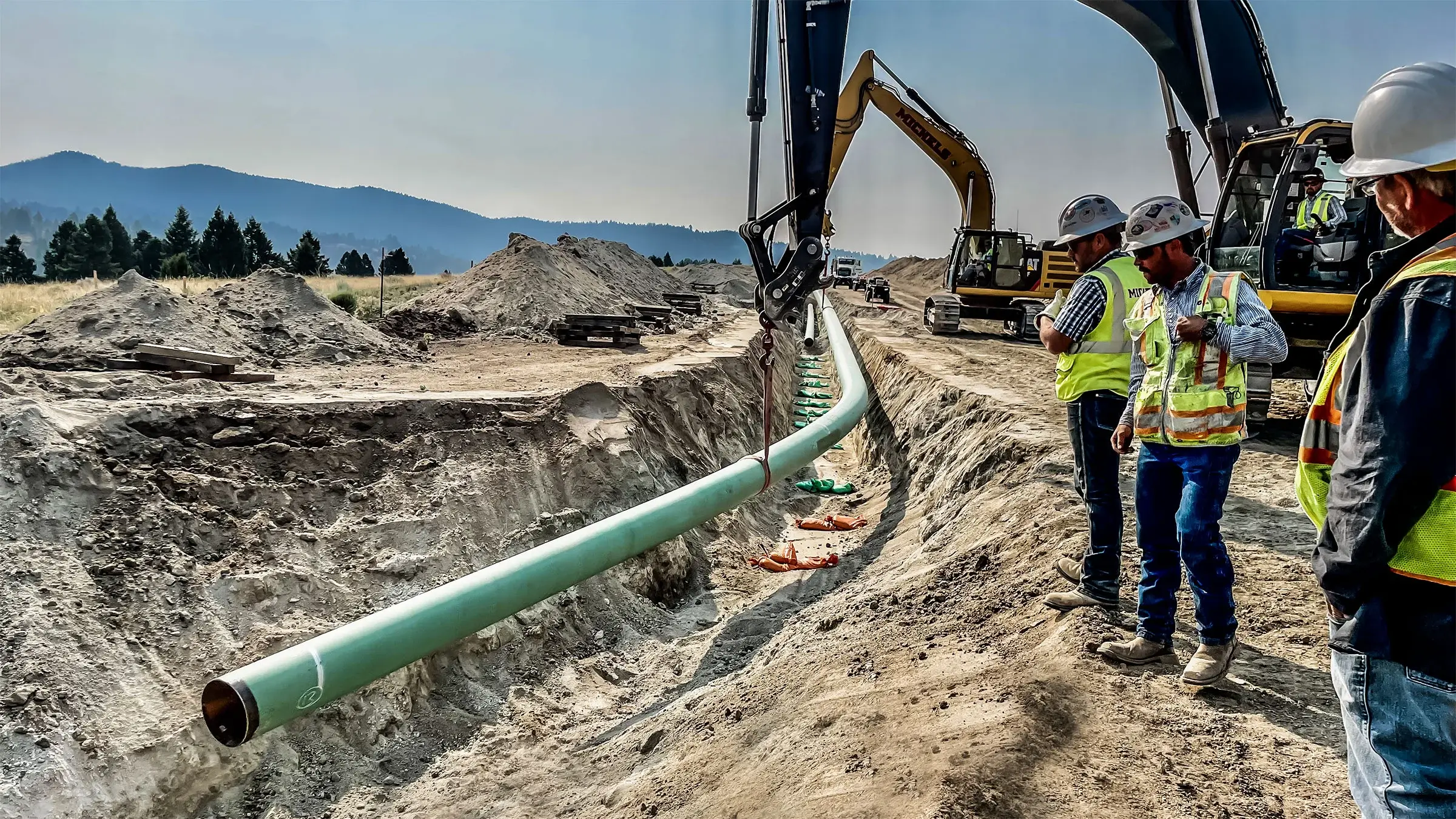The Environmental Impact With Creek Pipe HDPE installation Techniques
Wiki Article
Understanding the Fundamentals of Pipes Installation: What You Need to Know Regarding the Refine
Proper pipe installation is crucial for any pipes system. It calls for careful factor to consider of numerous aspects, including material selection and adherence to neighborhood guidelines. A tactical layout can prevent issues like stress loss, while the right devices ensure effective signing up with techniques. Also experienced installers can make usual mistakes. Recognizing these basics can lead to a much more efficient and sturdy system, prompting a closer take a look at the vital aspects involved in the process.Selecting the Right Products for Pipe Installation
When considering pipe installation, the choice of appropriate products is essential to guaranteeing toughness and performance. Numerous materials are available, each offering one-of-a-kind advantages and factors to consider. PVC pipes are lightweight, immune to corrosion, and economical, making them suitable for residential pipes. Alternatively, copper pipelines, understood for their durability and capacity to stand up to heats, are commonly liked for heating systems.Additionally, galvanized steel pipes supply stamina and longevity, suitable for durable applications, although they are susceptible to corrosion over time.For underground installments, polyethylene pipelines are preferred as a result of their adaptability and resistance to stress fracturing. Correct material option relies on the details needs of the task, including stress scores, temperature variants, and the chemical nature of the liquids being delivered - Creek Pipe Texas oilfield. Eventually, informed options relating to pipe products add greatly to the total success and longevity of pipes systemsUnderstanding Local Building Codes and Rules
How can recognizing local building regulations and policies impact pipe installation? Experience with these codes is crucial for guaranteeing that pipe installments are safe, certified, and efficient. Neighborhood building ordinance detail particular requirements pertaining to materials, installation techniques, and safety and security actions, which need to be abided by in order to prevent possible legal concerns and pricey fines.Failure to abide can bring about examinations being fallen short, delays in task completion, or even mandated elimination of incorrectly set up pipelines. In addition, recognizing zoning regulations and regulations can influence the type of materials allowed, as well as the approaches utilized for installation.Contractors and property owners alike ought to invest time in assessing neighborhood policies before beginning any type of installation task. This proactive technique not only promotes safety and security but also boosts the general top quality and durability of the pipes system, eventually promoting long-term capability and contentment.Preparation Your Pipe Design and Layout
Correct planning of pipe layout and design is necessary for attaining a reliable pipes system. This process starts with reviewing the details needs of the area, considering the area of components and home appliances. Precise measurements assure that pipes are properly routed, lessening bends and turns that can lead to press loss.Consideration of the flow rates and the sorts of products used is essential, as various materials have varying durability and compatibility with plumbing systems. Furthermore, the designer ought to represent future growths or alterations to the design, enabling flexibility in situation of renovations.Efficient drain and air flow are also substantial components of the style, as they prevent clogs and ensure appropriate waste elimination. Ultimately, partnership with neighborhood building ordinance assures conformity and safety, which is critical in any type of pipes installation job.Vital Devices and Devices for Installation
Successful pipe installation rests on having the right tools and equipment at hand. Necessary devices include pipe cutters for clean cuts, wrenches for tightening installations, and pliers for clutching and transforming pipes. In addition, a degree warranties pipelines are installed uniformly, while a gauging tape help in achieving accurate lengths.For particular materials, a blowpipe may be needed for copper pipes, while a PVC cutter is vital for plastic alternatives. Security devices, such as gloves and goggles, protects installers from possible dangers during the process.A pipeline bender can be especially helpful for developing smooth curves without compromising integrity, while a torque wrench assurances that links are safeguarded to the producer's specifications.Having these tools readily offered not just helps with a smoother installation procedure however likewise adds to the total longevity and functionality of the pipes system. Correct equipment is important in accomplishing long-lasting outcomes.Techniques for Appropriate Pipe Joining and Sealing
Achieving a protected and leak-free link between pipelines requires cautious attention to signing up with and sealing methods. Different techniques exist, each matched to various pipe products and applications (Creek Pipe roustabout). For instance, welding is typically utilized for metal pipes, making sure durable connections with warm blend. In contrast, plastic pipes gain from solvent cement or combination welding, creating strong, long-term bonds.Threaded links are common in both metal and plastic piping, needing exact positioning and making use of suitable sealants, such as Teflon tape or pipe dope, to avoid leaks. Compression installations provide an additional choice, where mechanical pressure secures the pipes with each other, making Creek Pipe pipeline construction them easily dismantled for maintenance.Regardless of the approach chosen, proper preparation is essential. This consists of cleaning pipe ends and ensuring they are without debris. Applying these strategies diligently will boost the durability and reliability of the pipe system, ultimately contributing to its reliable performanceCommon Mistakes to Avoid During Installation
Throughout pipe installation, staying clear of usual mistakes is crucial for guaranteeing a reliable and reliable system. One frequent mistake is stopping working to measure and cut pipes properly, which can lead to improper installations and leaks. In addition, ignoring to inspect the compatibility of materials can result in rust or other damage gradually. Incorrectly securing joints and links can likewise create weak factors in the system, creating possible failures.Another usual mistake is forgeting the value of slope and drainage; pipelines must be set up at the correct angle to promote proper circulation. Inadequate assistance for pipes can bring about drooping and tension, impacting the integrity of the system. Inevitably, overlooking neighborhood codes and policies can cause expensive rework and safety and security risks. By being mindful of these pitfalls, installers can significantly improve the resilience and performance of pipe systems.Upkeep Tips for Lasting Pipe Equipments
To ensure the long life of pipe systems, normal evaluations and cleaning are necessary techniques. These actions help identify prospective problems before they rise right into major troubles. Furthermore, utilizing proper insulation strategies can further protect pipelines from temperature variations and ecological aspects.Regular Assessments and Cleaning
Normal inspections and cleansing are vital for maintaining the long life and efficiency of pipe systems. Routinely taking a look at pipes for indications of deterioration, leaks, or clogs can assist recognize potential problems before they escalate right into expensive repair services. Cleaning pipelines periodically eliminates accumulation that can limit circulation and advertise deterioration. It is suggested to schedule evaluations a minimum of as soon as a year, yet more frequent checks may be essential in high-usage settings. Utilizing expert services for thorough cleaning assurances that all particles is successfully cleared. Furthermore, keeping records of inspections and upkeep activities help in tracking the system's health and wellness with time - Creek Pipe roustabout. By focusing on these techniques, property owners can improve the dependability and life-span of their pipe systemsAppropriate Insulation Methods
Effective insulation techniques play a necessary role in maintaining the efficiency and durability of pipe systems. Correct insulation reduces warmth loss in hot water pipelines and prevents cold in cold water pipelines, significantly lowering energy prices and prospective damage. Typical materials used for insulation include fiberglass, foam, and rubber, each offering differing degrees of thermal resistance. It is crucial to guarantee that insulation is applied evenly, covering all subjected areas without spaces. Additionally, safeguarding insulation with suitable fasteners aids maintain its setting and efficiency with time. Routine assessments should be performed to recognize wear and tear, ensuring timely substitutes. By implementing these strategies, pipe systems can operate efficiently and have a prolonged service life, eventually benefiting both the atmosphere and the home owner.
Often Asked Questions
How Do I Determine the Appropriate Pipe Dimension for My Project?
Figuring out the appropriate pipe size includes examining the project's circulation needs, stress specifications, and the kind of liquid being transported. Consulting style requirements and carrying out estimations guarantees optimal performance and efficiency in the installation process.What Are the Environmental Impacts of Different Pipe Materials?

Can I Mount Pipes Myself or Should I Hire an Expert?
The question of whether to set up pipelines individually or hire a specialist usually relies on the person's skill degree and job intricacy. A specialist may guarantee compliance with regulations and decrease potential long-term concerns.
The Length Of Time Can I Anticipate My Pipe Installation to Last?
The longevity of pipe installation differs considerably, usually lasting 20 to 100 years, relying on materials, installation quality, and maintenance. Normal assessments and appropriate treatment can improve durability and stop early failures.
What Are the Indications of a Failing Pipe System?
Indicators of a falling short pipe system consist of constant leaks, uncommon water pressure modifications, blemished water, mold development, and persistent moisture. Home owners ought to monitor these indications to prevent costly damage and guarantee prompt fixings are made.Report this wiki page